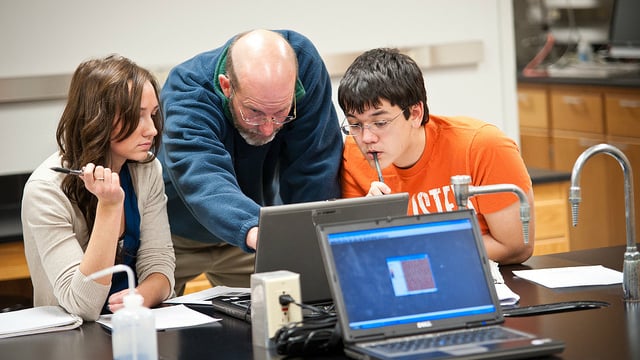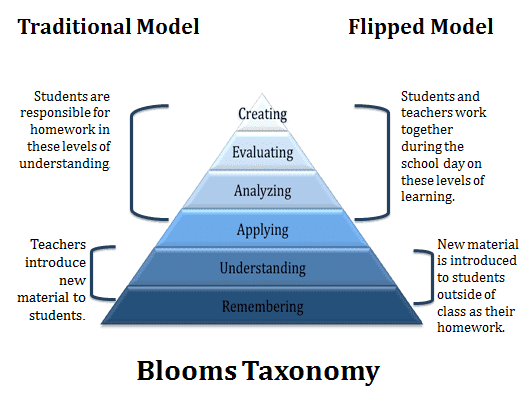
On many occasions I have felt as if I hit a creative glass ceiling. How much can a teacher really ‘innovate’ each time we go to class?
Perennially disengaged as they are, it is getting more and more difficult to effectively students today. Luckily for us educators, there is a new and effective pedagogy strategy – the Flipped Classroom Technique.
What is the Flipped Classroom technique?
Traditionally, teachers teach theory in the classroom and let students practice at home through homework. As the name goes, the flipped classroom technique basically flips classwork and homework.
Students will learn instructional content back home and then get to go through exercises and assignments in the classroom. Hence, the teacher dons the hat of a facilitator, rather than someone who tutors or merely professes. This results in a highly effective tutoring strategy.
Is the Flipped Classroom technique proven?
This concept can actually be traced way back to 1993, when Alison King published the article ‘From Sage on the Stage to Guide on the Side’. Though not in the direct sense, the article cited inversion of a classroom for better and higher active learning.
In case you haven’t heard of Alison King, 2004 saw Salman Khan of the Khan Academy record instructional videos so that his cousin could see recorded lessons repeatedly, whenever she wanted and at her pace. This tool is just one of many under the flipped classroom pedagogy.
Today this technique has been adopted by the best of teachers and professors world over.
What are the pros of Flipped Classroom technique?
Think of Blooms Taxonomy.

The elementary stages of remembering, understanding and applying are taken care of by introducing new study material to the student – at home along with the necessary homework. All this is delivered at a speed that suits the student’s pace of learning without any pressure, ensuring that what is learnt is thorough. The advanced stages (steps 4, 5 and 6) of analysing, evaluating and creating are done in class with classmates, and in the presence of the tutor. Facilitation takes the class to another level of learning, where the discussion is driven by the students, with progressive and active participation.
Moreover, the teachers’ ability to map the degree of comfort a student has with a topic increases manifold as he has access to the student’s homework before beginning to teach a topic. Not to forget that there is no down times in class, as there is traction from the word GO.
And the cons?
Well there are a few.
For starters, the students must have access to internet and a computer at home. Luckily this broadly isn’t a problem for tutors in Singapore. Secondly students need to be very driven to ensure that they keep the same pace of learning that their peers keep. This most often than not isn’t the case, and might warrant for parents to hire the services of a tuition agency or a private tutor, which adds to education expenses. Many experts are of the opinion that there is excessive usage of the computer as it is – this only makes things worse.
For us tutors, the hardest part is the fact that Flipped Learning needs very high levels of preparation. Think of the hours that will be spent findingjust the right video for students for instance. What if the video needs to be created! At an institutional level, it may warrant heighted investments in infrastructureat school.
How about any challenges in using the Flipped Classroom technique?
Challenge #1: I am a teacher, not a content creator!
Ah, that’s easy to address.
If you haven’t heard of screen casting –it is software that allows the tutor to record what is visible on a computer screen (or a whiteboard or other presentation software) while adding a voice over for the explanation. This leaves you rich with multiple videos by the end of an academic term. Explore software like Office Mix, Camtaisa and Screen-O-Matic for starters. They are all very user friendly. Tutors can also use cameras to record an experiment or use document cameras if they want to record an explanation of something while writing on a sheet of a paper.
Challenge #2: What do I do in class if they have done the theory at home?
Well, when your students are prepared (hopefully), you can engage them in class through a document analysis, or perhaps a debate and presentations. Peer reviewing helps maintain the balance of performing yet remaining involved taken care off. Project based learning too can be leveraged to further the objective of learning.
Can I combine the Flipped Classroom technique with another?
There are 2 easy ways to combine this learning strategy with another.

#1 Flipped Learning & Peer Instruction
Under this method, students are asked to share with peers, their response to a particular assignment, thereby allowing everyone to gain a different perspective to the problem. This method is useful only if there are a group of students, which isn’t the case with private tutoring.
#2 Flipped Learning & Gamification
Fun makes students want to learn. Combining games to theory provides the much needed impetus to want to learn. Do you remember that clueless feeling when your math tutor in school taught profit and loss as a concept? Now imagine the same being carried out using the board game Monopoly. This method works well even if there is just one student you are teaching. Especially in cases of private tutoring.
So what’s stopping you, try this for yourself! Your teaching might just ‘flip over’ for the best.
